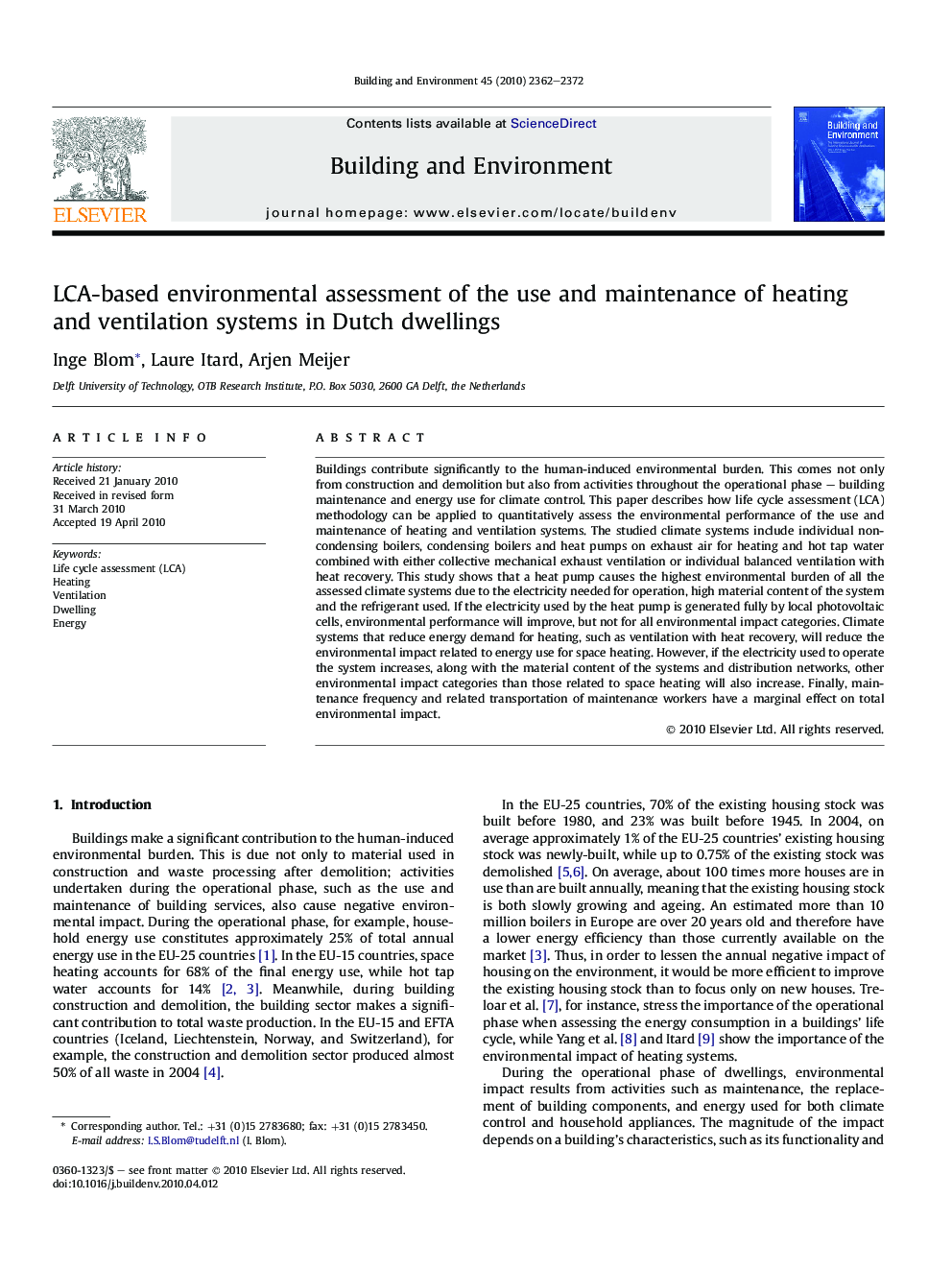| Article ID | Journal | Published Year | Pages | File Type |
|---|---|---|---|---|
| 248860 | Building and Environment | 2010 | 11 Pages |
Buildings contribute significantly to the human-induced environmental burden. This comes not only from construction and demolition but also from activities throughout the operational phase – building maintenance and energy use for climate control. This paper describes how life cycle assessment (LCA) methodology can be applied to quantitatively assess the environmental performance of the use and maintenance of heating and ventilation systems. The studied climate systems include individual non-condensing boilers, condensing boilers and heat pumps on exhaust air for heating and hot tap water combined with either collective mechanical exhaust ventilation or individual balanced ventilation with heat recovery. This study shows that a heat pump causes the highest environmental burden of all the assessed climate systems due to the electricity needed for operation, high material content of the system and the refrigerant used. If the electricity used by the heat pump is generated fully by local photovoltaic cells, environmental performance will improve, but not for all environmental impact categories. Climate systems that reduce energy demand for heating, such as ventilation with heat recovery, will reduce the environmental impact related to energy use for space heating. However, if the electricity used to operate the system increases, along with the material content of the systems and distribution networks, other environmental impact categories than those related to space heating will also increase. Finally, maintenance frequency and related transportation of maintenance workers have a marginal effect on total environmental impact.
